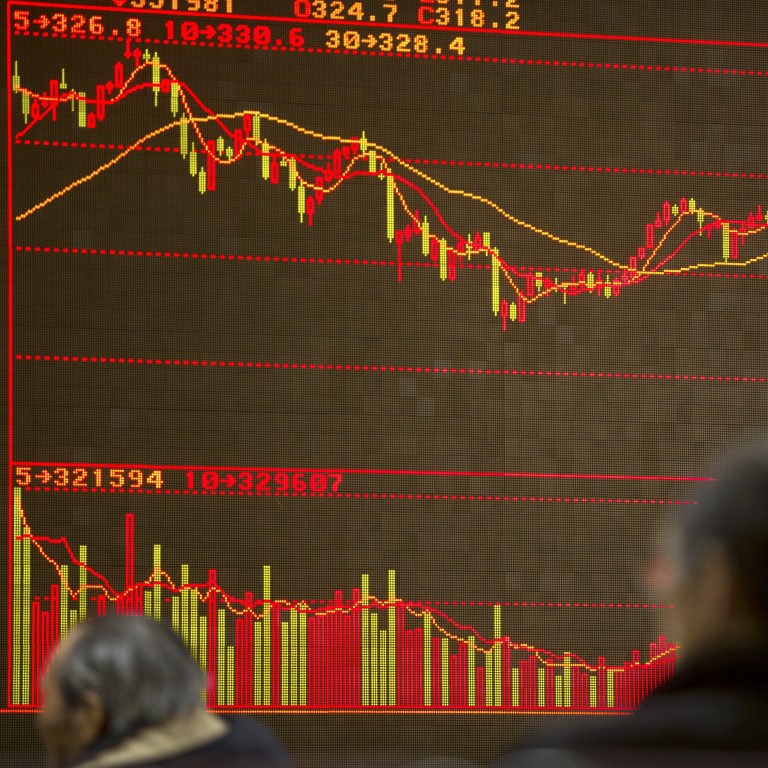
ChiNext, Star Market, China’s rival tech boards, target Hong Kong ‘red chip’ secondary listings as competition heats up
- China’s two Nasdaq-styled technology exchanges are locked in a tight race for home-grown businesses listed in Hong Kong
- Listing approval times, strategic positioning and valuations of the Shanghai and Shenzhen bourses differ between the established ChiNext and its much younger challenger
The battlefield on which China’s Nasdaq-styled technology boards in Shanghai and Shenzhen compete for listings has expanded beyond start-ups and billion-dollar tech unicorns.
The two exchanges have been locked in a tight race as they try to win business from established Chinese companies listed in Hong Kong.
Both the Science and Technology Innovation Board, also known as the Star Market, in Shanghai, and the ChiNext board in Shenzhen have in recent months introduced market-friendly reforms targeting so-called red chip companies – enterprises that have their businesses based in mainland China but are incorporated offshore.
“Red chip companies seeking a listing in their home market is a natural part of China’s capital market evolution,” said Edward Au, managing partner for the southern region at Deloitte China. “After many years of market reforms, the breadth of the Chinese stock market has become more commensurate with China’s technological and economic development”.
The race for red chip companies’ listings underlines just how China’s two technology boards have been propelled to the forefront of the country’s fast-growing capital market. The new economy, characterised by China’s legion of internet, payment and tech groups, contributed 16.1 per cent of the country’s gross domestic product in 2018 and is seen rising, as Beijing strives to become reliant on home-grown technology amid worsening relations with Washington.
Tencent posts 37 per cent profit rise on back of games as US WeChat ban looms
This put the decade-old board on the same footing as the Star Market, which has run the mechanism since its launch last year.
For the Star Market, it took an average 202 days for an IPO applicant to get approval as of the end of April, about a third of the 590 days it took ChiNex applicants, data from a China Renaissance report titled “ChiNext: China’s next STAR” shows.
Analysts expect the gap between the two exchanges’ approval time to narrow, now that ChiNext has also implemented the registration-based IPO system.
While the strategic positioning of both exchanges appears to serve tech innovators, red chip companies choosing between a listing on Star or ChiNext might need to consider some areas of divergence.
The Star Market touts the priority it gives to “hard technology” companies, and has defined firms within six sectors that it targets to serve. These include next generation infotech such as internet-of-things, artificial intelligence, big data and new energy.
ChiNext has also published a list spelling out its role in fundraising in similar sectors as the Star Market, but it has left out new materials, new energy, and environmental protection technology.
In general, ChiNext is geared more towards growth-oriented innovative and start-up enterprises, said Bruce Pang, head of macro, strategy research at China Renaissance.
“I would expect ChiNext’s focus would be on growth companies with smaller market capitalisation, whereas the Star Market will focus on companies with more advanced tech, targeting an investor group whose risk tolerance is higher, as their performance could be more volatile,” said Pang.
Reforms implemented at both ChiNext and the Star Market seek to ensure that issuers can price their IPOs based on market forces. Both boards have waived the requirement for issuers to price their flotations at 23 times earnings, a practice still in force at the Shanghai and Shenzhen main boards.
But red chip companies seeking to get a higher price for their A shares – which would be favourable to follow-on public offerings such as placements or rights issues – could take their lead from the overall market valuations.
For a given fundraising target, a market with higher valuations enables a company to issue a lower number of new shares, meaning less dilution for the controlling shareholders.
Across all markets, The Star 50 Index, the benchmark gauge tracking companies traded on the Star Market, has the highest forecast price-to-earnings multiples for both 2020 and 2021, at 70 times and 60 times respectively. These compare to ChiNext Index’s multiples of about 45 and 35 times respectively, China Renaissance found.
There seems to be no lack of potential takers for a “homecoming” listing among red chip companies. China Renaissance has identified social media giant Tencent, Ping An Health Care and Technology, Alibaba Pictures and smartphone giant Xiaomi among others, as being qualified for the two Chinese exchanges.

